Sometimes Trumpeter is criticized for its accuracy in the details and dimensions of various kits. Some are plainly obvious, some might be a bit hair splitting.
But the box of this one caught my eye.
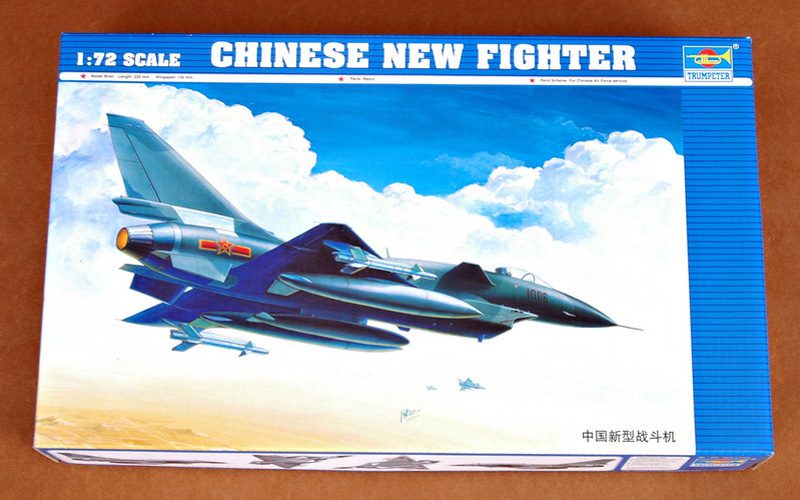
I was at my favorite hobby shop in the world, Hayes Hobby House in Fayetteville, NC, when I saw it. I stopped and did a double take. New Chinese Fighter? Are you serious? “Lack of research for shape and dimensions is bad enough”, I thought. But to miss the name entirely? It did make me laugh.
I did a few web searches to read more about the kit, and found that despite the odd naming, it wasn’t a bad model at all. Eventually I picked it up to tackle as a Labor Day weekend project.
The kit itself is very nice. While interior detailing is somewhat minimal, the surface detail and shape looked very good.
The cockpit consists of a four part seat, the cockpit “tub” itself, a very, very petite control column, and an instrument panel. While there is some raised surface detail on the side consoles and instrument panel, I decided to use the decal options that were provided. Given that finishing the kit over the long weekend was the priority, I thought this would be a good time saver.
Despite being rather plan, once painted and decaled, the cockpit didn’t look too bad. I used Vallejo sky gray for the interior, and gray/black for the seat. I added some simple tape belts to finish the seat off.
I went ahead and cleaned up and painted the landing gear parts also. The instructions called for white for these parts, but photos showed a medium gray color with just a hint of blue, so I mixed up something that was TLAR standard (that looks about right), and painted those parts. A drybrush with light gray, and a panel line wash over a gloss coat finished those off.
Test fitting showed the nose wheel bay and cockpit fit perfectly between the fuselage halves. I left off the nose cone and air intake at this point, as I planned to add the wings and canards first, allowing me to add nose weight sufficiently to tip the center of gravity forward.
I did have to use a bit of Mr. Dissolved Putty to banish some seams. The parts aligned perfect, and left no gaps, but the seam in a few places on the underside needed addressing. The spine of the aircraft has a small “hump” that runs from the aft cockpit opening all the way to the vertical stabilizer, so this seam was very easy to sand down.
The wing pieces consisted of a single lower piece with the gear bay molded in, and two upper pieces. They fit together nicely, with only a bit of Mr. Dissolved Putty needed right at the forward wing root area.
Joining the wing to the fuselage showed a bit of a gap on either side, but the wings appeared a bit drooped. Using some masking tape, I pulled the wing tips up a bit, closing the gap, and glued the join and let it dry. After that, only a little bit of Mr. Surfacer 500 was needed to close a few tiny gaps. I also added the canards at this point.
With those pieces in place, I began adding nose weight until I was sure the center of gravity was far enough forward to remove all possibility of the model being a tail sitter.
I added the nose cone, air intake, and canopy, and everything was ready for painting.
Reference photos of this particular aircraft showed it to be a light gray with medium gray camo pattern. Given my self imposed time limit, I went with what I had on hand that looked close enough- a light gull gray from Gunze, and Tamiya’s XF-19 sky gray.
The airframe was given a coat of the Gunze paint, and then the XF-19 was added freehand. A final cleanup with a highly thinned solution of the Gunze paint cleaned up the lines. This was allowed to dry a bit, and then a coat of Future was added.
The kit decals performed nicely, and settled in with Solvaset very well. A final overspray of gloss coat prepared the surface for a panel wash.
Payne’s Gray artist oil was used for the wash. It generally settled in well, though I realized the Gunze paint, which goes on glossy, was a bit thicker than I prefer. Because Trumpeter’s panel lines are very fine, the wash had difficulty staying in a few areas. I thought about taking measures to fix this, but realized that the model was only going to sit on my shelf, and the extra steps simply weren’t warranted.
With the panel wash (mostly) in place, I began to glue on the various dangly bits. With three extra fuel tanks, four missiles, and the landing gear and doors, it got a bit crowded underneath, especially in this scale. After knocking parts out of alignment more than a few times, I finally had it all lined up and set it aside to dry. I gave it a coat of Vallejo satin varnish, and called it complete.
Despite its funny name, this kit is a gem. I really enjoyed it, and would recommend it to anyone. It’s not so stuffed full of parts that it is a headache, yet when finished it looks very good, and I think it captures the Lavish shape of the J-10 very well. 🙂
When a kit is this nice, I suppose a generic name is sufficient!
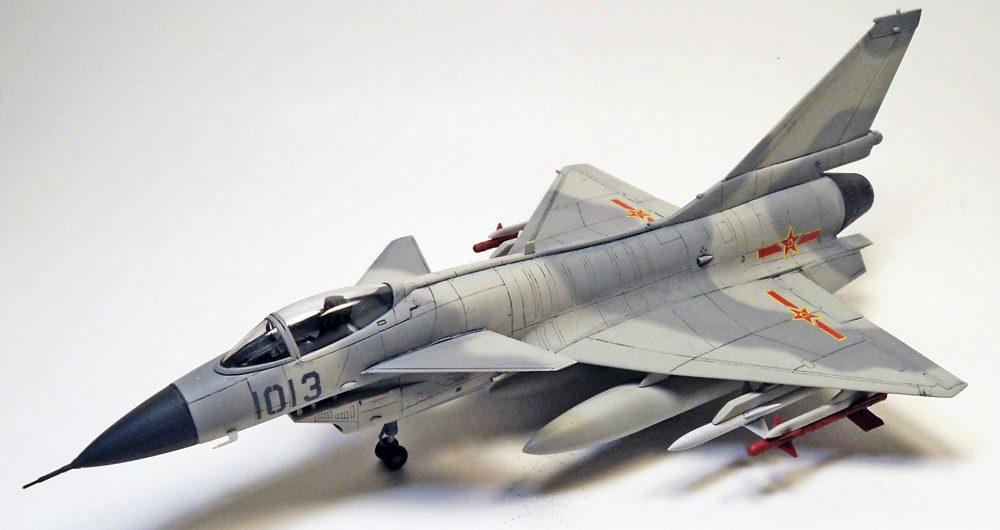
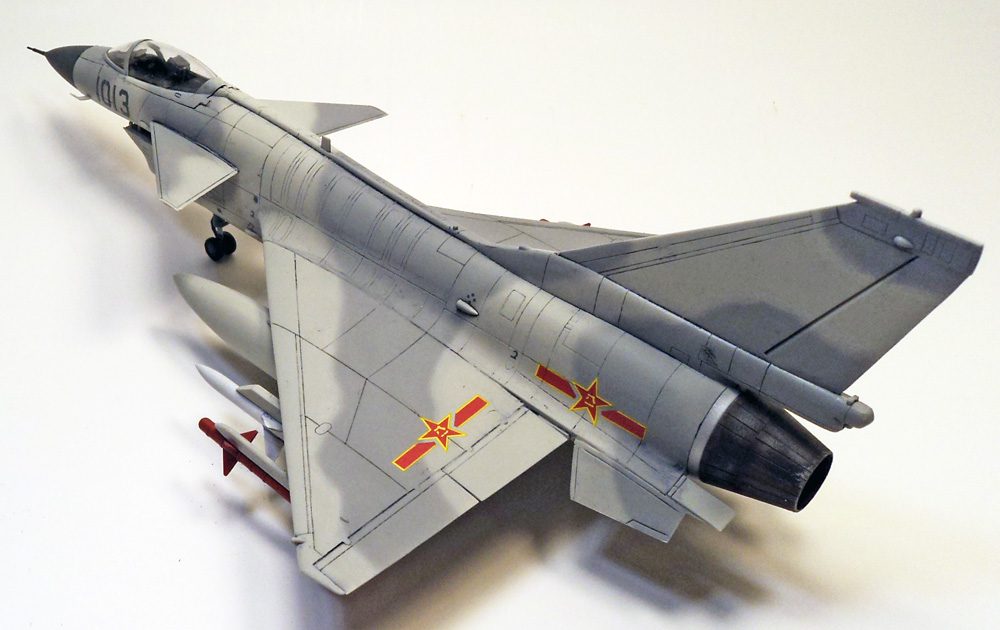
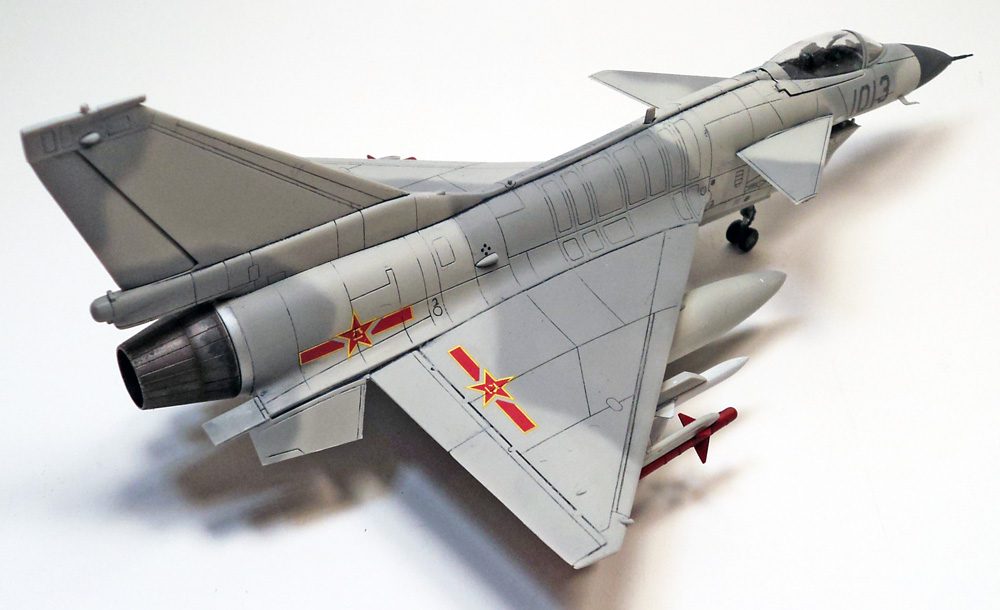
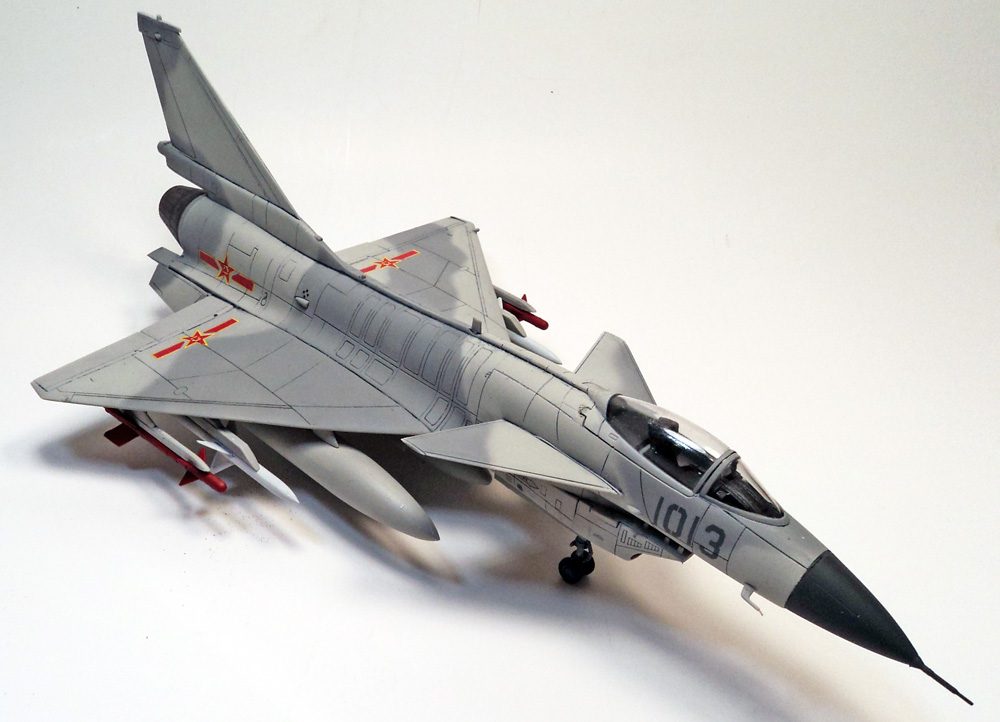
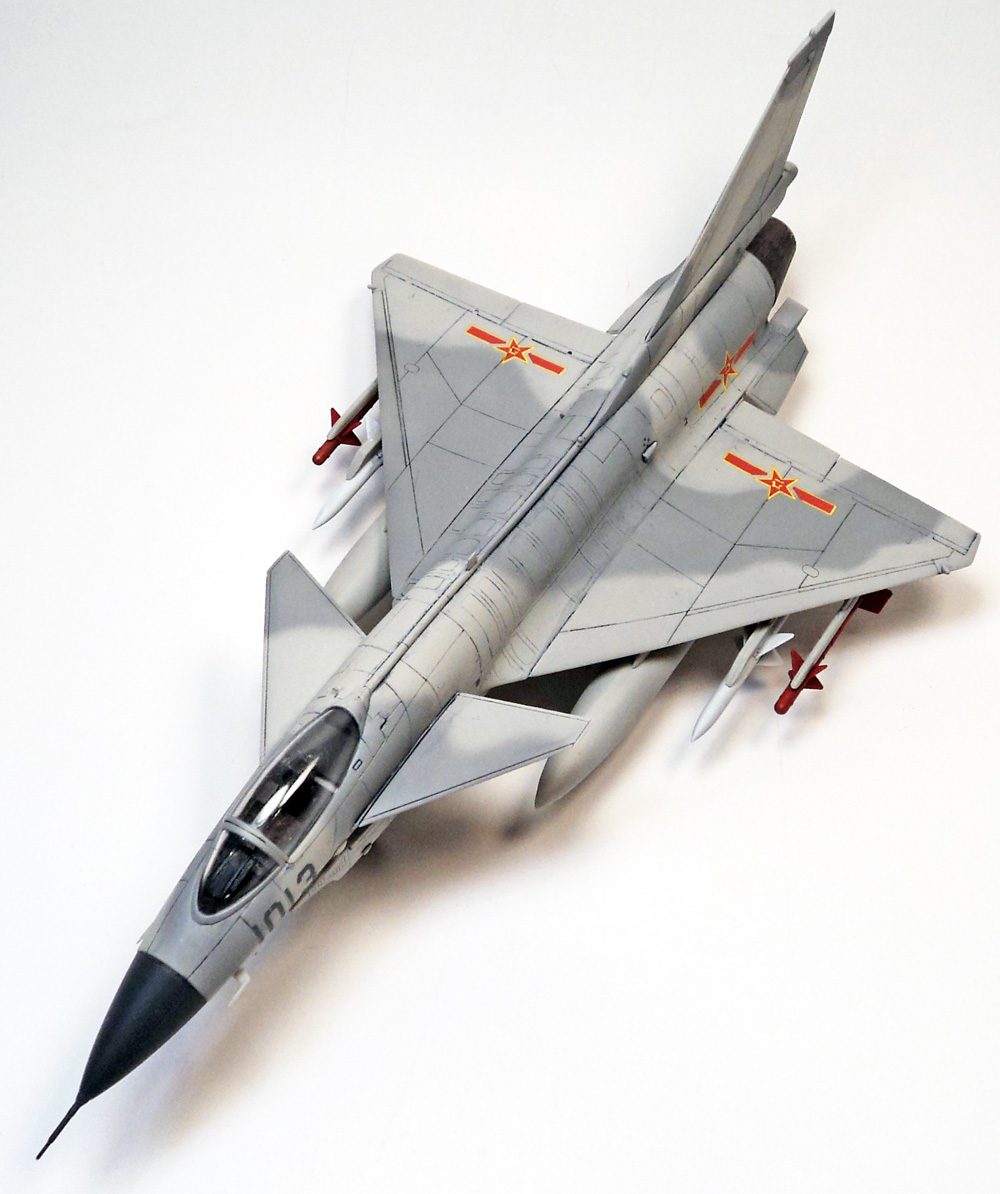
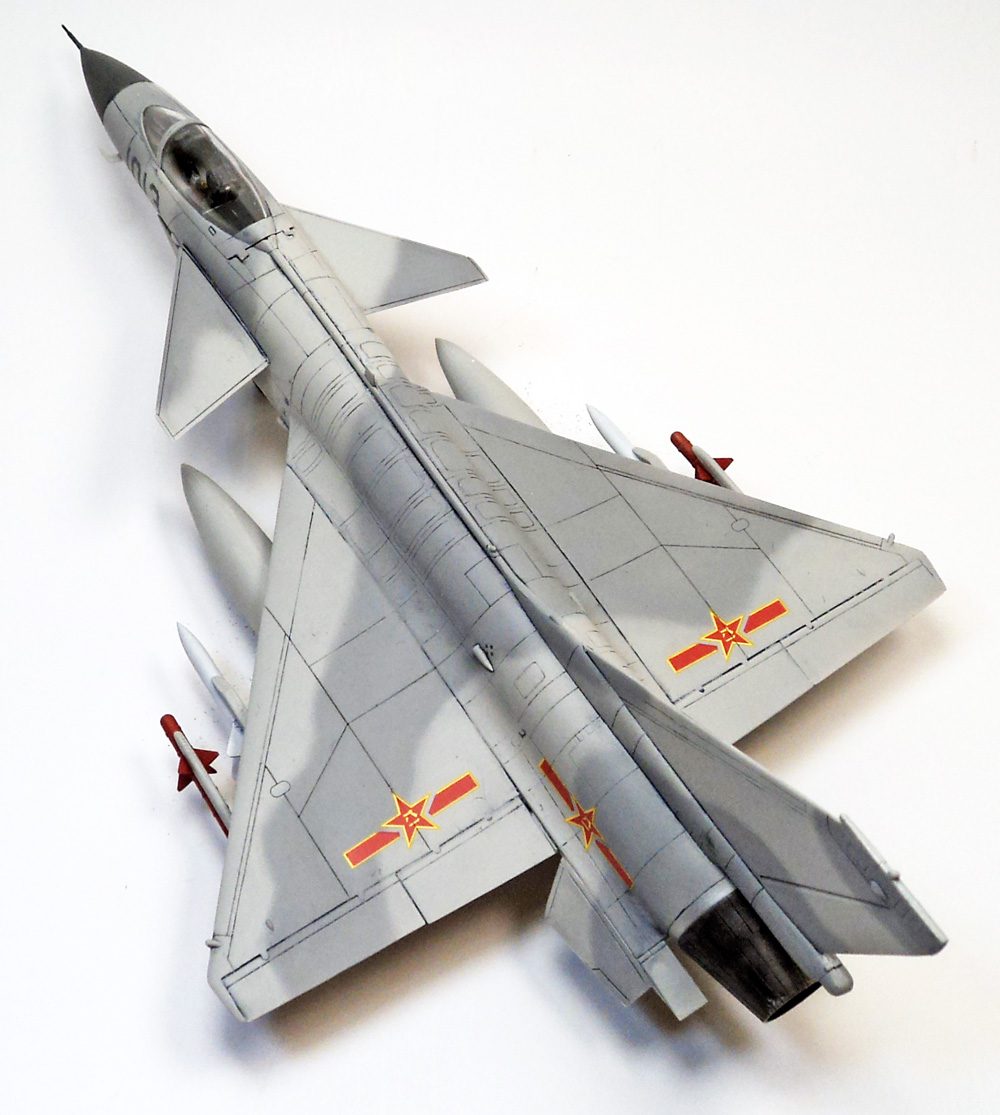
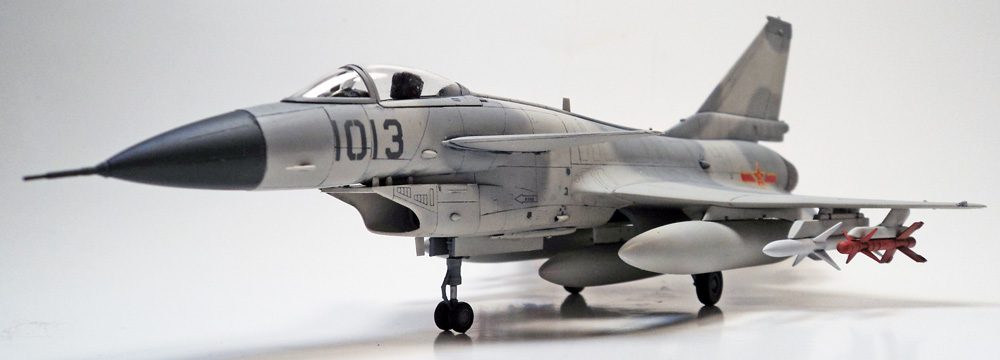
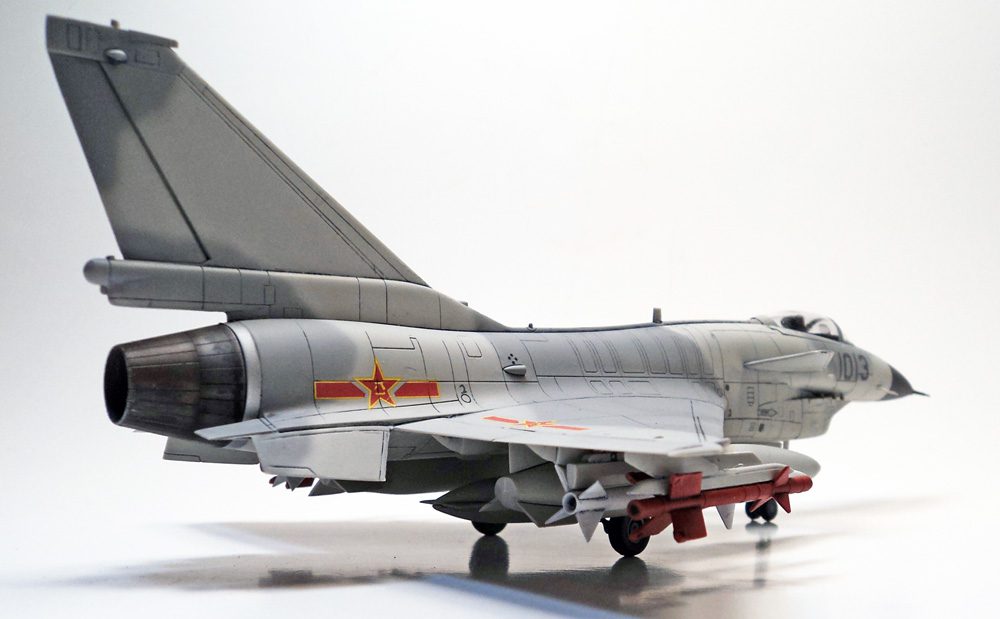
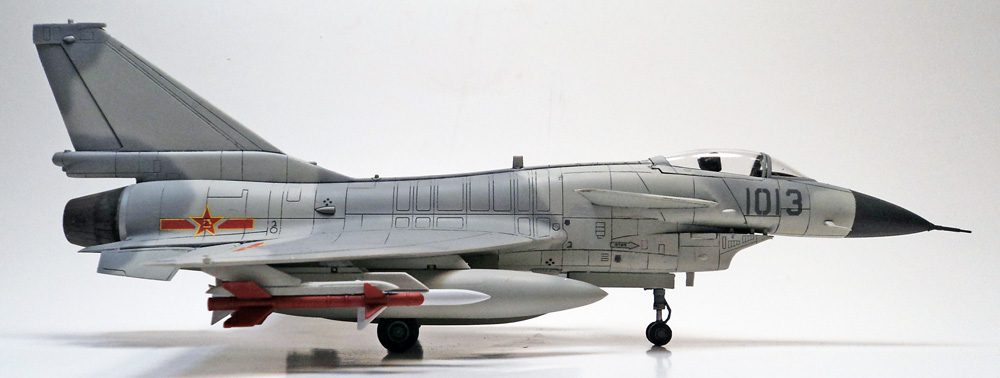


Leave a Reply